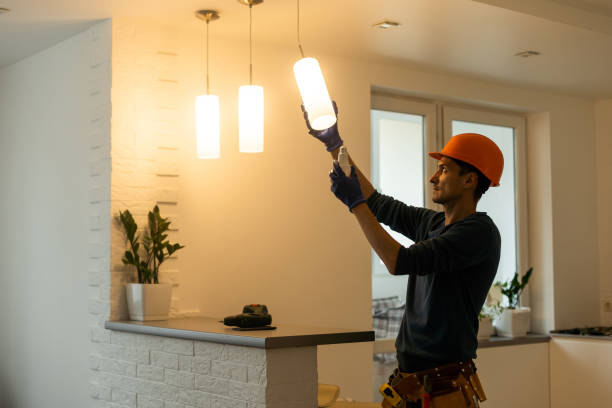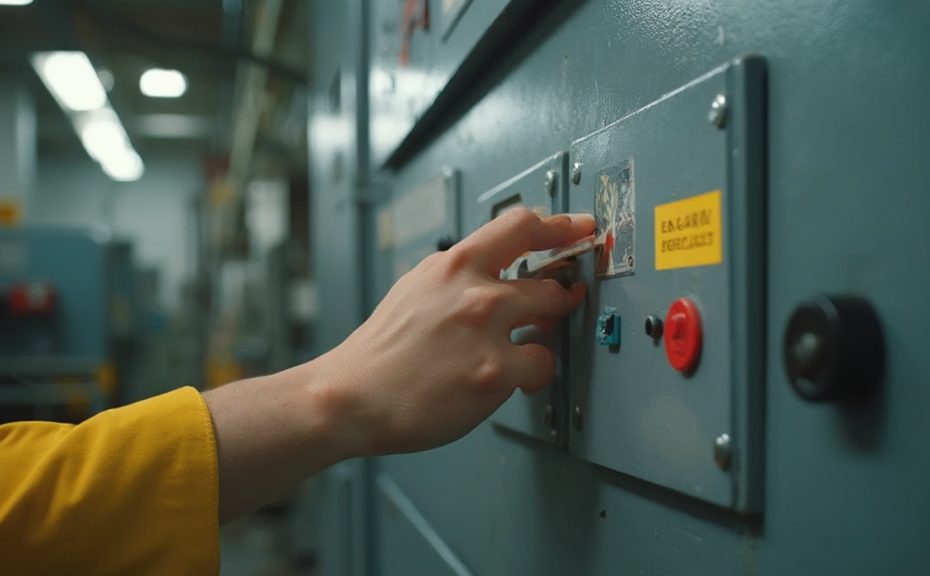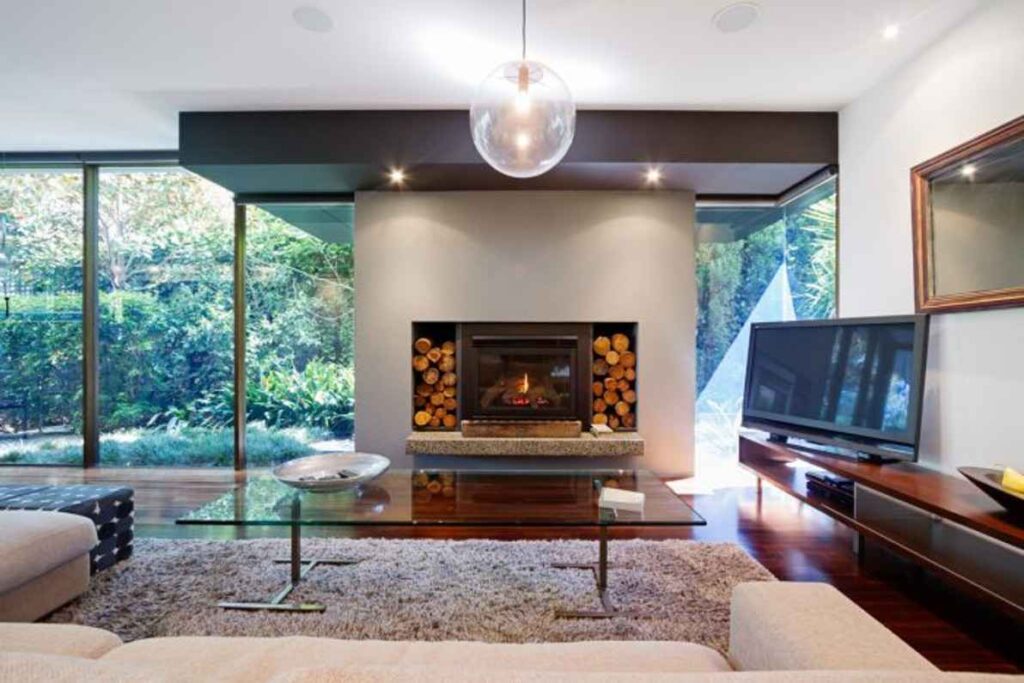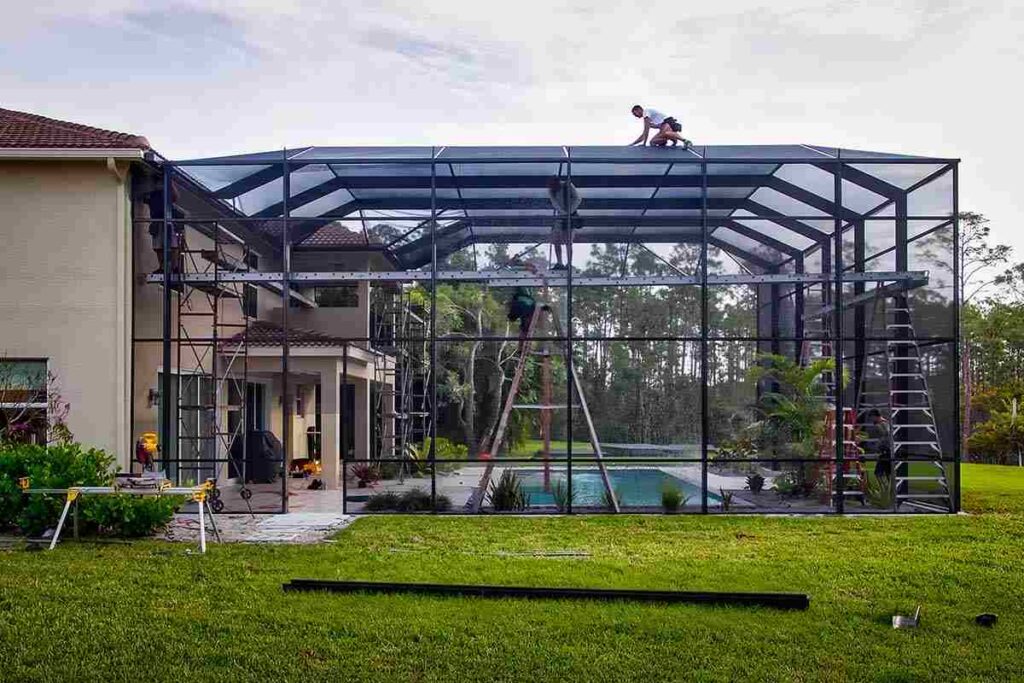When it comes to installing lighting, safety is a top priority for professionals like Frederick Trimlight. Whether it’s for indoor ambiance or outdoor elegance, skilled installers follow strict safety measures to ensure flawless results without any risks. From using high-quality tools and wearing protective gear to adhering to electrical codes, every step is carefully planned. They inspect wiring, secure connections, and even test the system thoroughly before completing the job. So, when you choose Frederick Trimlight, you’re not just getting stunning lighting—you’re also ensuring your home is safe and the installation is handled with utmost care and expertise.
Ensuring safety during lighting installation is not just about following a checklist—it’s about understanding the importance of every step and executing it with precision. Professional lighting installers, like those at Frederick Trimlight, have honed their craft to provide not only stunning lighting designs but also a safe experience for every client. Let’s dive into how professionals ensure safety during lighting installation while delivering high-quality results.
1. Thorough Planning and Preparation

Thorough planning and preparation are essential for safe and efficient lighting installations, especially for Residential Trimlight Services. Professionals start by inspecting the space to identify potential hazards, such as outdated wiring or moisture-prone areas. They carefully calculate electrical loads to prevent circuit overload and choose high-quality, weather-resistant materials for durability. This meticulous preparation ensures that your Trimlight system enhances your home\u2019s beauty while maintaining safety. With proper planning, your residential lighting is set up to provide stunning results with peace of mind.
The first step in any professional lighting installation is careful planning. This involves assessing the space, identifying potential hazards, and ensuring the right materials and tools are available. Here’s what the preparation process typically includes:
Site Inspection: Professionals inspect the area to identify any potential risks, such as outdated wiring, unstable fixtures, or water exposure in outdoor setups.
Material Selection: High-quality materials, such as UL-listed cables and fixtures, are chosen to ensure durability and safety.
Load Calculation: Installers calculate the electrical load to prevent circuit overload, which can lead to fires or equipment damage.
By addressing these aspects before beginning the installation, professionals set the foundation for a safe and efficient process.
2. Adhering to Electrical Codes
Electrical codes are the backbone of safe lighting installation. These regulations are designed to minimize risks like electrical shocks, fires, or system failures. Professional installers are well-versed in the National Electrical Code (NEC) and local codes, ensuring compliance at every step. Here’s how this translates into practice:
Proper Grounding: Grounding prevents electrical shocks by directing excess current safely into the ground.
Circuit Breaker Placement: Ensuring circuit breakers are easily accessible and functional helps in quickly shutting off power during emergencies.
Wire Sizing: Using the correct wire size prevents overheating and ensures efficient current flow.
3. Using Proper Tools and Equipment
The right tools can make all the difference. Professionals use specialized equipment designed for electrical work to minimize risks. Some commonly used tools include:
Voltage Testers: To check for live wires before handling them.
Insulated Tools: Screwdrivers and pliers with insulation to prevent accidental shocks.
Ladders Designed for Electrical Work: Non-conductive fiberglass ladders are preferred over metal ones.
By using these tools, installers ensure precision and safety throughout the process.
4. Personal Protective Equipment (PPE)
Safety gear is essential when working with electricity. Professional installers prioritize their safety by wearing the appropriate protective equipment, including:
Insulated Gloves: To protect against electric shocks.
Safety Goggles: To shield eyes from debris or accidental sparks.
Hard Hats: Especially useful in construction zones or when installing overhead lighting.
Wearing PPE is a simple yet effective way to prevent injuries during installation.
5. Disconnecting Power Sources

One of the golden rules of electrical work is to always disconnect the power source before beginning. Professionals double-check that circuits are completely de-energized before handling any wires or fixtures. They use lockout/tagout (LOTO) devices to ensure the power remains off until the work is completed.
6. Secure Wiring Practices
Messy or poorly secured wiring is a common cause of electrical hazards. Professional installers follow best practices to ensure wiring is both functional and safe:
Tight Connections: Loose connections can cause sparks or overheating, so they ensure all wires are securely fastened.
Proper Insulation: Exposed wires are covered with high-quality insulation to prevent short circuits.
Labeling Wires: This makes future maintenance or upgrades safer and easier.
7. Testing and Inspection
Testing and inspection are crucial steps in ensuring the safety and functionality of lighting installations, including Commercial Trimlight Services. Professionals conduct continuity tests to verify uninterrupted electrical flow and load tests to ensure the system can handle the intended capacity. A detailed visual inspection checks for secure wiring and fixture stability. These steps guarantee that your Trimlight system not only meets safety standards but also delivers reliable performance, making it perfect for enhancing the aesthetic and functionality of commercial spaces.
Once the installation is complete, thorough testing is conducted to ensure everything is functioning correctly and safely. Here’s what this step entails:
Continuity Testing: To verify that the electrical flow is uninterrupted.
Load Testing: Ensures the system can handle the intended load without issues.
Visual Inspection: Checking for any signs of damage or irregularities in the wiring and fixtures.
Professionals also encourage clients to conduct regular inspections to maintain long-term safety.
8. Weatherproofing Outdoor Installations
Outdoor lighting presents unique challenges, as it’s exposed to the elements. Professionals take extra precautions to weatherproof these installations:
Using Waterproof Fixtures: Special fixtures designed to withstand rain and humidity.
Sealing Connections: Silicone or weatherproof tape is used to protect connections from moisture.
Proper Grounding: Essential for outdoor systems to prevent lightning-related hazards.
9. Educating Clients
Educating clients is a vital part of professional lighting installation, ensuring they understand maintenance and proper use. Common mistakes to avoid with accent lighting installation, For example, with accent lighting, common mistakes include using overly bright fixtures, improper placement that causes glare, and neglecting dimmers for flexibility. Professionals guide clients on choosing the right brightness levels, optimal positioning, and integrating controls for enhanced functionality. By sharing these insights, installers empower clients to avoid errors and enjoy their lighting systems to the fullest, ensuring safety and aesthetic appeal.
Safety doesn’t end when the installation is complete. Professionals like those at Frederick Trimlight take the time to educate clients on how to use and maintain their new lighting systems safely. This includes:
Guidance on Maintenance: Tips on cleaning and inspecting fixtures.
Emergency Procedures: What to do in case of a malfunction.
Avoiding Overloading: Advising against adding too many fixtures to the same circuit.
10. Staying Updated with Technology
The lighting industry is constantly evolving, with new technologies and safety standards emerging regularly. Professional installers stay updated on these advancements to offer the safest and most efficient solutions. For instance:
LED Technology: LEDs run cooler and use less energy, reducing the risk of overheating.
Smart Systems: Automated lighting systems can include safety features like remote shut-off and fault detection.
By incorporating these innovations, professionals enhance both safety and convenience for their clients.
Why Choose Professionals Like Frederick Trimlight?
Lighting installation might seem like a DIY-friendly task, but the risks involved make professional expertise invaluable. Here’s why hiring professionals like Frederick Trimlight is the best choice:
Experience: Years of experience enable them to anticipate and address potential issues.
Safety Focus: Their primary goal is to ensure the safety of your home or business.
Aesthetic Expertise: They combine safety with design to create visually stunning lighting solutions.
Whether you’re upgrading your indoor lighting or installing an outdoor system, trusting professionals ensures the job is done safely and efficiently.
FAQs
Why is lighting important for safety?
Lighting is crucial for safety as it enhances visibility, reducing the risk of accidents and falls in poorly lit areas. It deters crime by illuminating spaces, making them less attractive to intruders. Additionally, proper lighting ensures clear navigation in emergency situations, helping people move safely and quickly.
What are the important factors involved in designing lighting installation?
Key factors in designing lighting installation include functionality, ensuring the lights meet the specific needs of the space, such as task lighting or ambiance. Aesthetics play a role, as the design should complement the space’s style while providing adequate illumination. Additionally, energy efficiency and safety are critical, requiring the use of appropriate fixtures, proper wiring, and adherence to electrical codes.
What safety procedures should be in place when changing light fittings?
When changing light fittings, always switch off the power at the circuit breaker and verify with a voltage tester to ensure no live current is present. Use insulated tools and wear protective gear, such as gloves and safety goggles, to prevent electrical shocks and injuries. Ensure the new fitting is securely installed, with proper wiring connections and grounding, and test the circuit safely after re-energizing the power.
What are the safety measures of lighting in the kitchen?
Safety measures for kitchen lighting include using fixtures with appropriate IP ratings to prevent moisture and grease from damaging electrical components. Install task lighting in areas like countertops and stoves to ensure safe food preparation and handling. Additionally, ensure all wiring is properly insulated and grounded, and use LED bulbs to reduce heat and energy consumption in this high-usage area.
How do you stay safe from lighting?
To stay safe from lighting hazards, avoid direct contact with live wires or faulty fixtures by switching off power at the circuit breaker during maintenance. Use appropriate protective equipment, like insulated gloves and goggles, and ensure all installations comply with electrical safety standards. Regularly inspect and maintain your lighting systems to identify and fix potential issues, such as exposed wires or overheating bulbs, before they become dangerous.
Final Thoughts
Safety is the cornerstone of professional lighting installation. From meticulous planning to thorough testing, every step is designed to minimize risks and maximize performance. By choosing experts like Frederick Trimlight, you’re investing in not just beautiful lighting but also peace of mind. So, the next time you think about upgrading your lighting, remember—safety and professionalism go hand in hand.



